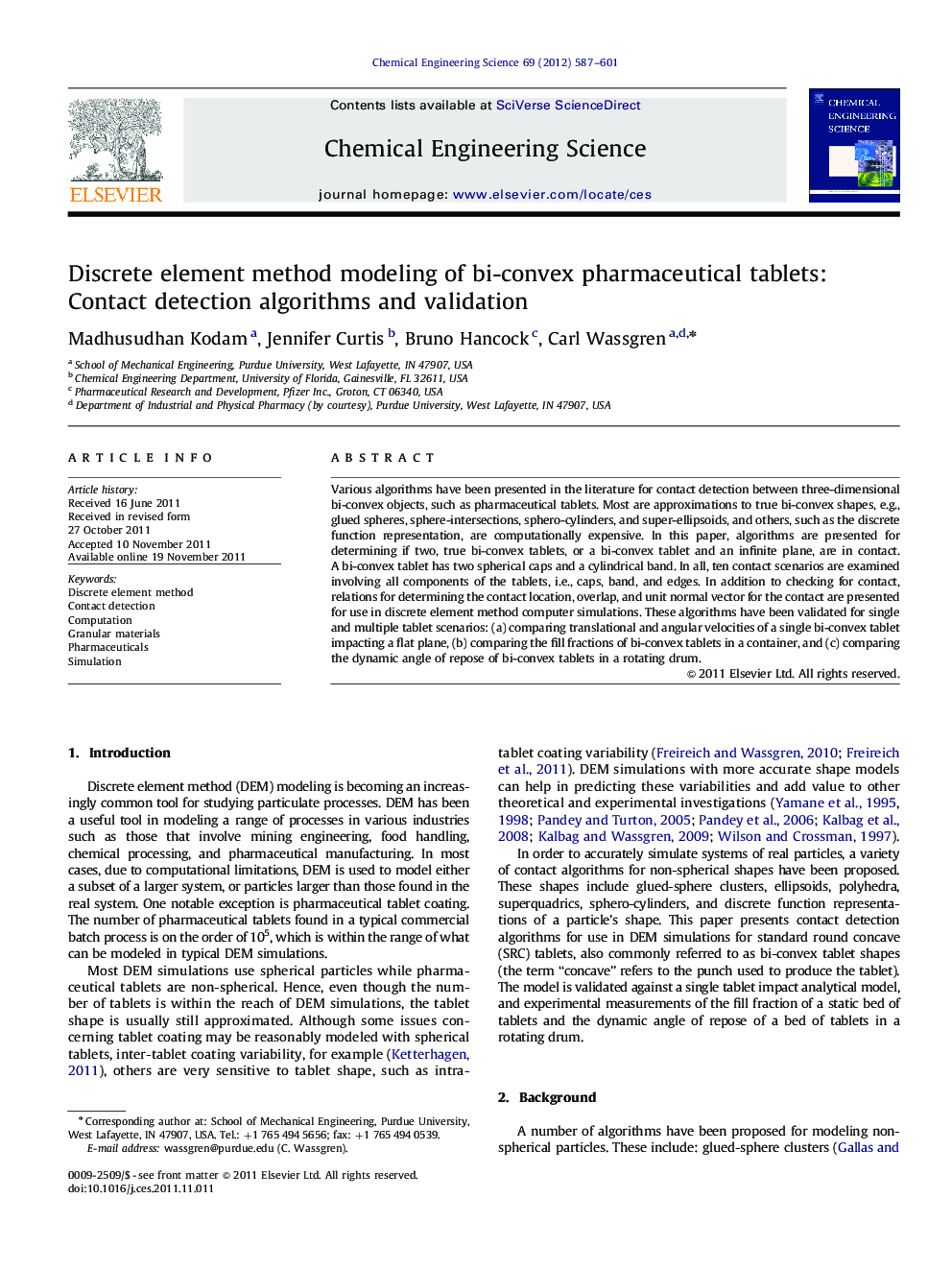| Article ID | Journal | Published Year | Pages | File Type |
|---|---|---|---|---|
| 155931 | Chemical Engineering Science | 2012 | 15 Pages |
Various algorithms have been presented in the literature for contact detection between three-dimensional bi-convex objects, such as pharmaceutical tablets. Most are approximations to true bi-convex shapes, e.g., glued spheres, sphere-intersections, sphero-cylinders, and super-ellipsoids, and others, such as the discrete function representation, are computationally expensive. In this paper, algorithms are presented for determining if two, true bi-convex tablets, or a bi-convex tablet and an infinite plane, are in contact. A bi-convex tablet has two spherical caps and a cylindrical band. In all, ten contact scenarios are examined involving all components of the tablets, i.e., caps, band, and edges. In addition to checking for contact, relations for determining the contact location, overlap, and unit normal vector for the contact are presented for use in discrete element method computer simulations. These algorithms have been validated for single and multiple tablet scenarios: (a) comparing translational and angular velocities of a single bi-convex tablet impacting a flat plane, (b) comparing the fill fractions of bi-convex tablets in a container, and (c) comparing the dynamic angle of repose of bi-convex tablets in a rotating drum.
▶ Algorithms were developed for detecting contact between two bi-convex tablets. ▶ Algorithms were also developed for contact between a tablet and a plane. ▶ The degree of overlap, unit normal, and location of the contact are provided. ▶ The algorithms were validated against static and dynamic experiments.
